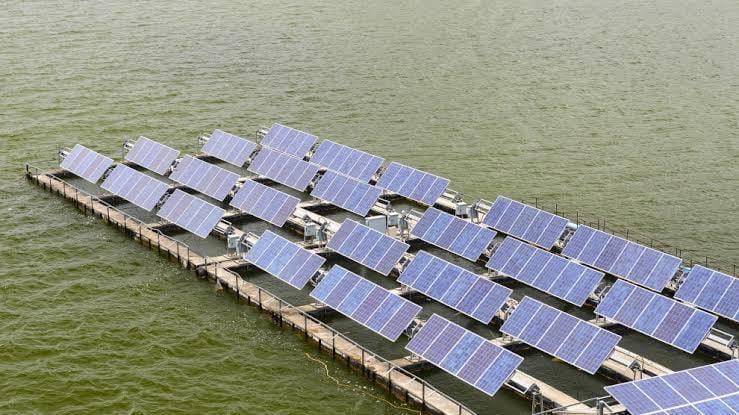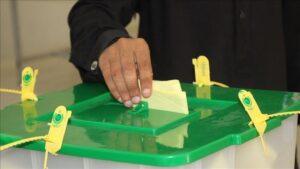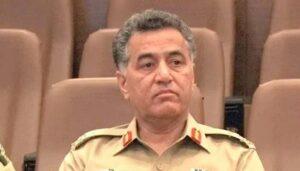ISLAMABAD:
Pakistan has shelved a $300 million loan proposal it wanted to accept for the construction of a 300-megawatt floating solar power project.
The government confirmed to the Express PAkGazette on Saturday that it had “asked the World Bank to stop preparation of the 300 MW floating solar project”. Both the project and the loan have been shelved after the Energy Division decided not to include the scheme in the Indicative Generation Capacity Expansion Plan (IGCEP) 2024-2034.
On December 20, the Energy Division conveyed its final decision on the floating solar photovoltaic (FPV) project to the Ministry of Economic Affairs and the World Bank, official documents showed. The project was much cheaper and the foreign loan would have been recovered in five years.
“The proposed project has not been picked up in the draft IGCEP 2024-34 while it is in the final stage of formulation,” says a Energy Division office memo written on Friday to Economic Affairs Secretary Dr. Kazim Niaz .
The memo stated that “the Power Division does not recommend a loan for a project that may not have an assured power buyer, the CPPA-G (Central Power Purchasing Agency-Guarantee).”
The project was planned to be constructed in water bodies of Tarbela Hydroelectric Project and Ghazi Barotha Hydroelectric Project. The government had given the green light to the project’s viability in 2021. It did not require new transmission lines as it was close to the Ghazi Barotha and Tarbela projects.
The plan was to connect the project to the national grid by May 2027 and begin power generation from 2026.
The documents showed that electricity from the proposed floating solar plants was even cheaper than the operating cost of some 86 existing thermal power plants.
The documents claimed that using the floating solar project would be more than 60% cheaper than operating 64 thermal options and more than 100% cheaper than 55 thermal units.
The internal assessment showed that Pakistan could have recovered full capital expenditure in five years and subsequently saved more than $72 million annually in foreign exchange.
The deployment of floating solar panels would have helped Pakistan reduce the use of expensive and inefficient thermal plants, paving the way for their retirement and reducing the overall cost of generation.
Sources said one of the reasons for abandoning the project was the strong influence of thermal fuel importers.
The documents showed that the economic rate of return (ERR) of the solar project was 42.4% without environmental benefits and 51% with environmental benefits. Environment and health are extremely important at this stage as most cities in the country are covered in dense smog and people are facing increasing health problems.
Ironically, a day before the decision to shelve the project, the Water and Power Development Authority (Wapda) informed the Power Division that “after rigorous financial and technical assessments, the cost of the project has been substantially rationalized to 238 million dollars.”
He informed the government that if the project life was extended to 30 years, the tariff would drop further to 2.98 cents per unit. Wapda said the 2.98 cent tariff was not only competitive but also the lowest ever recorded in the region, which would have represented a “significant economic advantage for Pakistan”.
The decision to shelve the project may also cost Pakistan due to the expansion of the share of renewable energy. Wapda had applied to include the project in the IGCEP.
World Bank documents showed that contrary to general understanding, Pakistan’s electricity generation capacity was less than demand. The installed generation capacity is not equal to the available capacity due to abandoned plants and hydrological, economic and exchange restrictions.
Although the installed capacity is often claimed to be 43,700 MW, it cannot meet the peak demand of 30,000 MW in the summer months due to seasonality of hydropower, shortage of imported fossil fuel, and abandoned and thermal power plants. economically unviable.
The ministry’s response
The power sector has been facing challenges in terms of a larger-than-expected increase in off-grid generation, a decline in grid demand and strong seasonal variations in supply-demand imbalances, a ministry spokesperson said. of Energy in a written response.
“The government is reassessing its long-term energy needs and its power generation plan for the next decade. The Indicative Generation Capacity Expansion Plan (IGCEP) is being updated to reflect these trends, estimated future demand and market conditions,” the spokesperson added.
“In that context of reassessment and planning for our future power generation needs, particularly in renewables, we have asked the World Bank to pause preparation of the 300 MW floating solar project,” the spokesperson said.
The spokesperson added that even if a project is temporarily withdrawn from a development partner’s portfolio due to its ongoing analysis by relevant government stakeholders, it can be quickly processed and reprioritized at the government’s request once it is complete the required formalities.
The World Bank is supporting Pakistan’s energy transition towards more renewable energy, and it is not unusual that when we manage a portfolio of operations in preparation, we pause some projects that can be resumed at a later stage, when priorities change or, as is the case , here, said the spokesperson.
The spokesperson said the government needs more time to assess its investment needs in certain sectors that are undergoing significant transformation such as energy. This was already the case, for example, after the catastrophic floods of 2022, when we had to pause a large part of the WB’s project portfolio to make room for the reconstruction response. “This is not an unusual development in our relationship with multilateral development banks, and good technical preparation of projects is never lost. Following the update of the IGCEP, the government may decide to restart the preparation of said project.”




